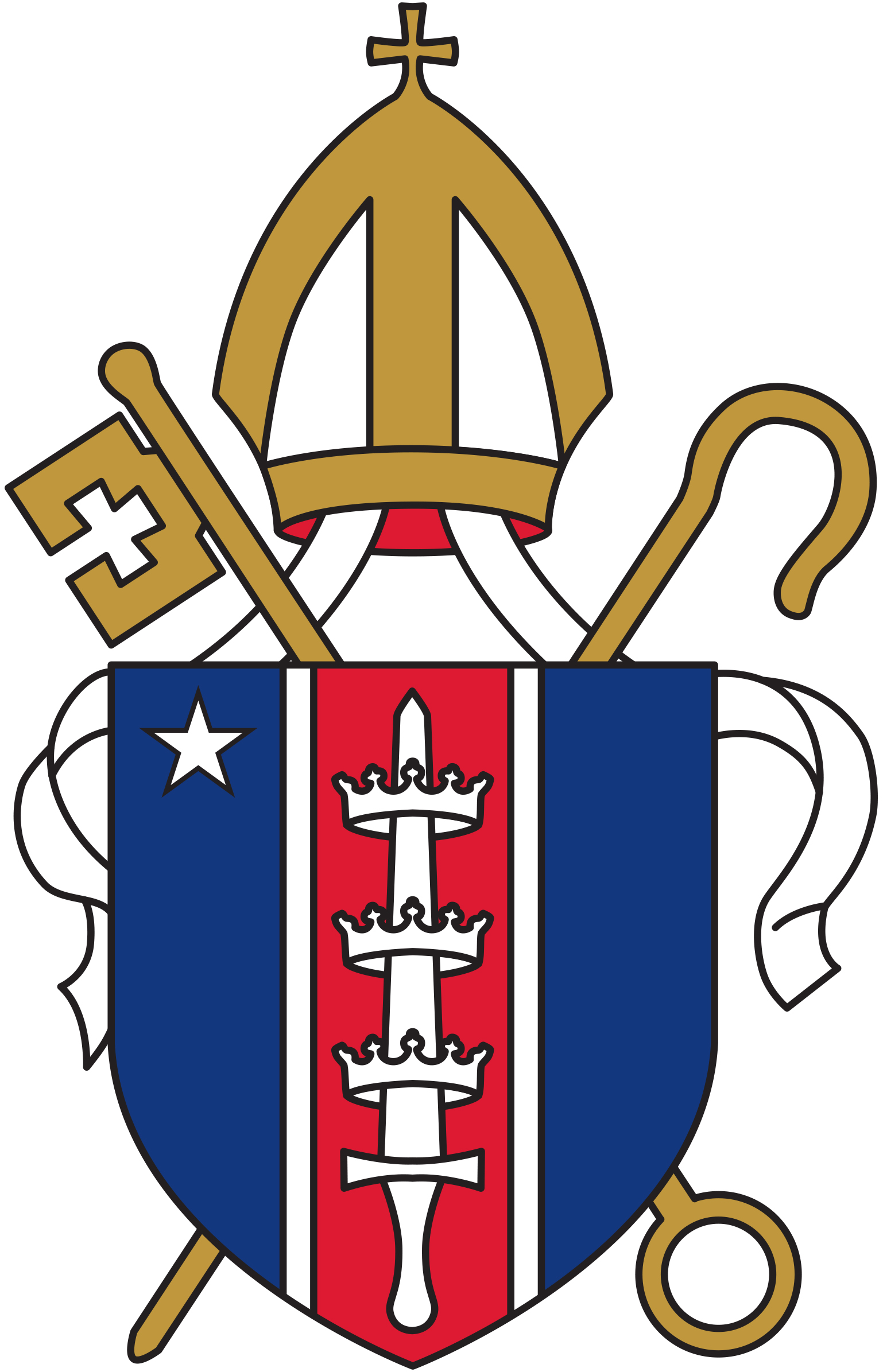April 25, 2020
My Holy Week journey was out of sync. In order to prepare our videotaped Easter Day celebration at the Cathedral Church of St. Paul, my Easter sermon had to be written and delivered fully 10 days ahead. I centered my mind and heart in the astonishing revelation of the Empty Tomb. Then, with that taping accomplished, I re-entered the narrative of our communal journey, just heading into Palm Sunday. Easter gladness was suddenly a memory, as the sorrows of the Passion once more took center stage. It was a strangely disjointed experience – from Lenten solemnity to Easter exaltation to Passiontide sorrow to Good Friday desolation and back to Easter gladness. There was nothing linear about this journey.
Our calendar this year is out of sync. With the pandemic crisis surrounding us, we are in a continuing state of anxiety and sadness. Though the liturgical calendar says we have made the transition from Lent into Easter season, the reality around us suggests otherwise. Living in the northern hemisphere, we are accustomed to an alignment between the message of resurrection and the bursting forth of spring. But this year neither the world’s vernal renewal from grey to green, nor the church’s liturgical transition from purple to white, is aligned with the continued global struggle with isolation and fear. There is nothing linear about this journey.
Our lives are perpetually out of sync. In fact, this year’s powerful experience of disjunction between season and sensibility is always present to some degree. Things never really progress neatly from challenge to resolution, from pain to pleasure, from sorrow to celebration. A man’s sister dies on the day his daughter gives birth. A priest moves from a celebratory confirmation in the morning to a graveside funeral in the afternoon. A son celebrates college commencement in one state while his grandfather undergoes bypass surgery in another. A marriage is joyfully but quietly solemnized in the midst of pandemic isolation. Neat, predictable cycles are not the way of things. There is nothing linear about this journey.
The apostle Thomas was out of sync. Thomas was not with the other disciples when Jesus appeared to them, huddled behind locked doors. Jesus had renewed their spirits with his spirit and brought them peace. Thomas wanted to see for himself. And so it happened, a week later. “Jesus came and stood among them and said, ‘Peace be with you.’ Then he said to Thomas, ‘Put your finger here and see my hands. Reach out your hand and put it in my side. Do not doubt, but believe.’ Thomas answered him, ‘My Lord and my God!’” [John 20:26-29] Of course, even this happy ending is still not the end. Still the disciples will recognize the Risen Christ at some moments, and fail to recognize him at other moments. Still the disciples will endure Jesus’ second departure. Still they will have trials and martyrdom to face. There was nothing linear about their journey.
But having once known the Resurrection, the victorious power of love would now be the object of the apostles’ faith, and the bedrock of their life. Life was still, often enough, full of hardship and sorrow. But now they knew: it was not yet the end. In fact, in so many ways, it was just the beginning – the start of a journey which would never be linear, but which would always be traversed in the knowledge of Christ’s risen presence and with the promise of renewed life and joy.
In Christianity it is called "inaugurated eschatology." That is Jesus’ message that resurrection is available to us not just in an afterlife, but even now. The grief-stricken find comfort and begin again. The addicted find sobriety. The rejected find love. The frightened find courage. The dispirited find hope. This resurrection we see with our own eyes. And another resurrection is yet to come. This we see only with the eyes of faith – “through a glass, darkly” – entrusting the victims of this dreadful pandemic, and our own loved ones, and ourselves, and this whole sad, broken world of ours – entrusting all of these to the eternal love of God. The resurrection already; the resurrection yet to come. Christ is risen!
Easter is not Easter because the calendar says it is. Easter is not Easter because our springtime world displays it. Easter is not Easter because our lives consistently manifest it. Easter is not holiday good cheer; it is not the stuff of championship parades. Easter is Easter precisely because in the midst of lives which are not linear and experiences which are out of sync, we – like the apostles – journey in the knowledge of Christ’s risen presence and with the promise of renewed life and joy. Our Easter season may feel like an extended Lent this year – but that is precisely when we need it most.
Hear again last Sunday’s word from Saint Paul: "God has given us a new birth into a living hope through the resurrection of Jesus Christ from the dead. … In this you rejoice, even if now for a little while you have had to suffer various trials. … Although you have not seen him, you love him; and even though you do not see him now, you believe in him and rejoice with an indescribable and glorious joy." [I Peter 1:3,6,8]
Blessings of these Great Fifty Days to you.
Faithfully and fondly,
+Alan
The Rt. Rev. Alan M. Gates
